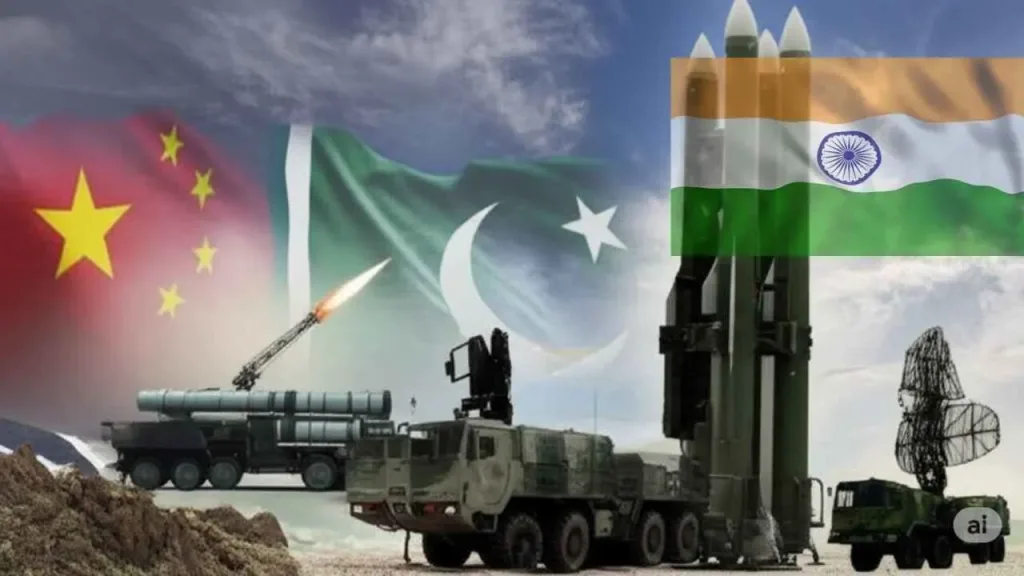As tensions simmer along India’s borders with Pakistan and China, a complex geopolitical shuffle involving the world’s most advanced missile defense system—the Russian-made S-400 Triumf—is raising critical questions in New Delhi.
India, which signed a $5.43 billion deal with Russia in 2018 to acquire five S-400 squadrons, is still awaiting the delivery of its fourth and fifth units. While three have already been deployed along key frontier zones—targeting threats from Pakistan and China—fresh reports suggest that Russia may have prioritized delivery of the system to Beijing, fueling unease within Indian defense circles.
According to a recent Economic Times report, Moscow has handed over additional S-400 systems to China, even as India remains in the queue. The move, if confirmed, could carry significant implications for regional security dynamics, especially at a time when military analysts warn that hostilities between India and Pakistan could escalate at any moment.
Beijing Gets the Missiles—But Not the Best?
Interestingly, while China has received more S-400s, defense sources claim that the systems delivered may be downgraded variants. Beijing, according to Chinese media reports, is reportedly dissatisfied with the performance of its S-400 units, believing they lack some of the more advanced features available in the Russian inventory. Russian media outlets have also suggested that China’s attempts to extract the full technical capabilities of the S-400 have largely been unsuccessful.
Yet, even a reduced capability S-400 is no minor addition. It reinforces China’s air defense infrastructure at a time when strategic posturing across Asia is growing more assertive.
India Still Waiting
India’s first S-400 squadron was delivered in December 2021 and deployed along the western and northern borders. The second arrived in April 2022, reportedly stationed in Ladakh, while the third, received in 2023, now protects the sensitive Siliguri Corridor—a narrow stretch connecting mainland India to its northeastern states.
The fourth squadron is expected by the end of 2025, with the final unit delayed until at least October 2026. These revised delivery timelines are the result of complications arising from the Russia-Ukraine war, which has disrupted Russian defense production lines, supply chains, and global payment systems due to Western sanctions.
India has not publicly criticized the delay, but diplomatic signals suggest growing frustration. Prime Minister Narendra Modi’s July 2024 visit to Moscow included a renewed push for expedited deliveries. Russia, in turn, reportedly promised to accelerate the process, though little visible progress has been made since.
Why the S-400 Matters
At the heart of this strategic anxiety is the unmatched capability of the S-400 Triumf—a system NATO itself has labeled as one of the most formidable air defense shields in the world.
The S-400’s radar can detect targets up to 600 kilometers away, simultaneously tracking up to 300 aerial threats. It can launch four types of missiles with ranges varying from 40 km to 400 km, engaging targets from aircraft to ballistic missiles and even drones. With the ability to hit up to 36 targets at once from multiple directions, the system is widely regarded as a cornerstone of modern air defense.
For India, which faces the constant specter of a two-front conflict, these capabilities are not just desirable—they are essential.
Strategic Calculus: China, Pakistan, and India
India’s current security posture is heavily shaped by its volatile relationship with Pakistan and a more complex, high-stakes rivalry with China. Islamabad’s growing military partnership with Beijing—evident in reports of China supplying Pakistan with advanced HQ-9 air defense systems—only intensifies New Delhi’s urgency.
Although Pakistan lacks the economic heft to match India’s arms procurement dollar-for-dollar, its strategic depth is often reinforced through Chinese defense support. This triangular axis—India, China, and Pakistan—underscores why delays in the S-400 delivery are not just procurement issues but matters of national security.

Looking Ahead
The long wait for full deployment of the S-400 across India’s vulnerable border zones continues to frustrate policymakers and defense officials alike. While India has so far received three out of the five squadrons it paid for, the question remains: When will the rest arrive—and will they arrive in time?
As the geopolitical chessboard shifts, one thing is clear: In the realm of modern warfare, timing can be as critical as technology. And for India, the clock is ticking.
Would you like a timeline infographic of the S-400 deliveries to India and China?
